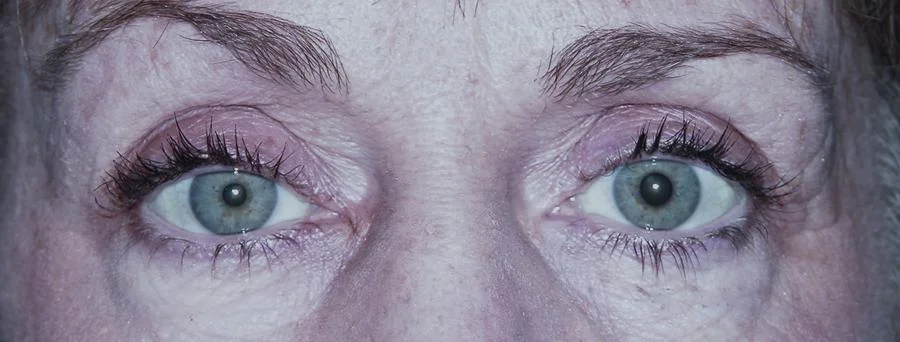Video credit: Lee AG. Pharmacologic Testing for Horner Syndrome. Video. YouTube. Available online. Accessed 02-27-2019.
Dilation Lag (video)
Video credit: Digre KB, Jacobson D, Balhorn R. Dilation Lag. Video. [Neuro-Ophthalmology Virtual Education Library: NOVEL Web Site]. 2005. Available online. Accessed 02-27-2019.
Horner Syndrome
Right Horner syndrome.
Note the anisocoria (right pupil smaller than left pupil) and right upper lid ptosis. There is not a prominent right lower lid ptosis present.
Image credit: American Academy of Ophthalmology. Used with permission for educational purposes.
Horner Syndrome
Right Horner syndrome.
Note the anisocoria (right pupil smaller than left pupil), and right upper eyelid ptosis. Right lower eyelid ptosis is not as pronounced in this case.
Image credit: American Academy of Ophthalmology. Used with permission for educational purposes.
Horner Syndrome
Right Horner syndrome.
Note the anisocoria (right pupil smaller than left pupil) and right upper and lower ptosis. In a child, the most common cause of congenital Horner syndrome is birth trauma to the brachial plexus, with acquired childhood Horner syndrome concerning for neuroblastoma. Apraclonidine should be avoided in small children due to the risk of CNS and respiratory depression.
Image credit: American Academy of Ophthalmology. Used with permission for educational purposes.
Horner Syndrome
Left Horner syndrome.
Note the anisocoria (right pupil larger than left pupil) suggesting miosis of the left pupil. There is left upper lid ptosis and a very slight left lower lid ptosis, consistent with paralysis of the Müller and inferior tarsal muscles, respectively. There is also some mild increased conjunctival injection in the left eye, which can occur due to the disruption of sympathetic innervation to the periocular blood vessels.
Image credit: American Academy of Ophthalmology. Used with permission for educational purposes.




